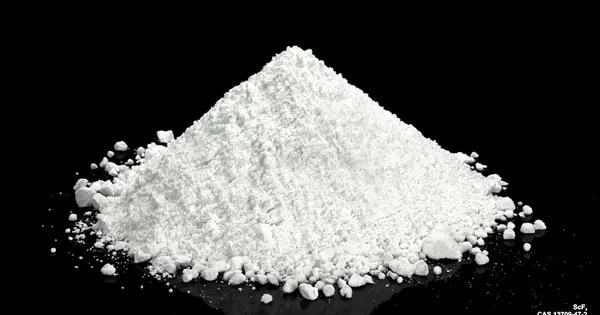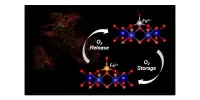Scandium(III) fluoride, ScF3, is an ionic compound. It is an ionic compound, where scandium exists in its +3 oxidation state (Sc³⁺) and is bonded to three fluoride ions (F⁻). This salt is slightly soluble in water but dissolves in the presence of excess fluoride to form the ScF63− anion.
It is an important compound with unique properties that make it valuable in specialized applications, though it is not commonly found in large quantities in nature and is synthesized industrially.
Production
ScF3 can be produced by reacting scandium and fluorine. It is also formed during the extraction from the ore thortveitite by the reaction of Sc2O3 with ammonium bifluoride at high temperature:
Sc2O3 + 6 NH4HF2 → 2 ScF3 + 6 NH4F + 3 H2O
The resulting mixture contains a number of metal fluorides and this is reduced by reaction with calcium metal at high temperature. Further purification steps are required to produce usable metallic scandium.
Properties
Scandium fluoride is a white, crystalline solid. It is sparingly soluble in water and more soluble in concentrated acids. As an ionic solid, it does not conduct electricity in its solid state but can conduct when molten.
- Chemical formula: ScF3
- Molar mass: 101.95112 g/mol
- Appearance: bright white powder
- Density: 2.53 g/cm3
- Melting point: 1,552 °C (2,826 °F; 1,825 K)
- Boiling point: 1,607 °C (2,925 °F; 1,880 K)
ScF₃ is relatively stable at room temperature but can react with strong acids to release fluoride ions and produce scandium salts. When heated to high temperatures, it can decompose into scandium metal and fluoride gases (though this requires extreme conditions).
Occurrence in Nature
Scandium fluoride is a synthetic compound. It does not naturally occur as a distinct mineral but may be found in some rare earth minerals in trace amounts, particularly in minerals that contain scandium. Scandium itself is typically obtained from ores such as thortveitite (Sc₂Si₂O₇), and occasionally, scandium-containing minerals can have fluoride impurities.
Industrial Synthesis
Scandium(III) fluoride is generally prepared by the reaction of scandium salts, like scandium chloride (ScCl₃), with hydrofluoric acid (HF). The chemical reaction can be represented as: ScCl3+3HF→ScF3+3HCl
Extraction of Scandium
Scandium itself is not commonly found in large amounts in the Earth’s crust, and it is primarily produced as a by-product of extracting other metals, especially uranium and thorium ores.
Applications
- Materials Science: ScF₃ is used in the production of advanced ceramics and as a component in the development of high-performance materials due to its high melting point and stability.
- Optics: It is sometimes used in optics and coatings for optical lenses, as it has high transparency in the ultraviolet to infrared range.
- Nuclear Technology: Scandium compounds, including ScF₃, are sometimes considered in the study of nuclear fuels or reactors due to their chemical stability.
















